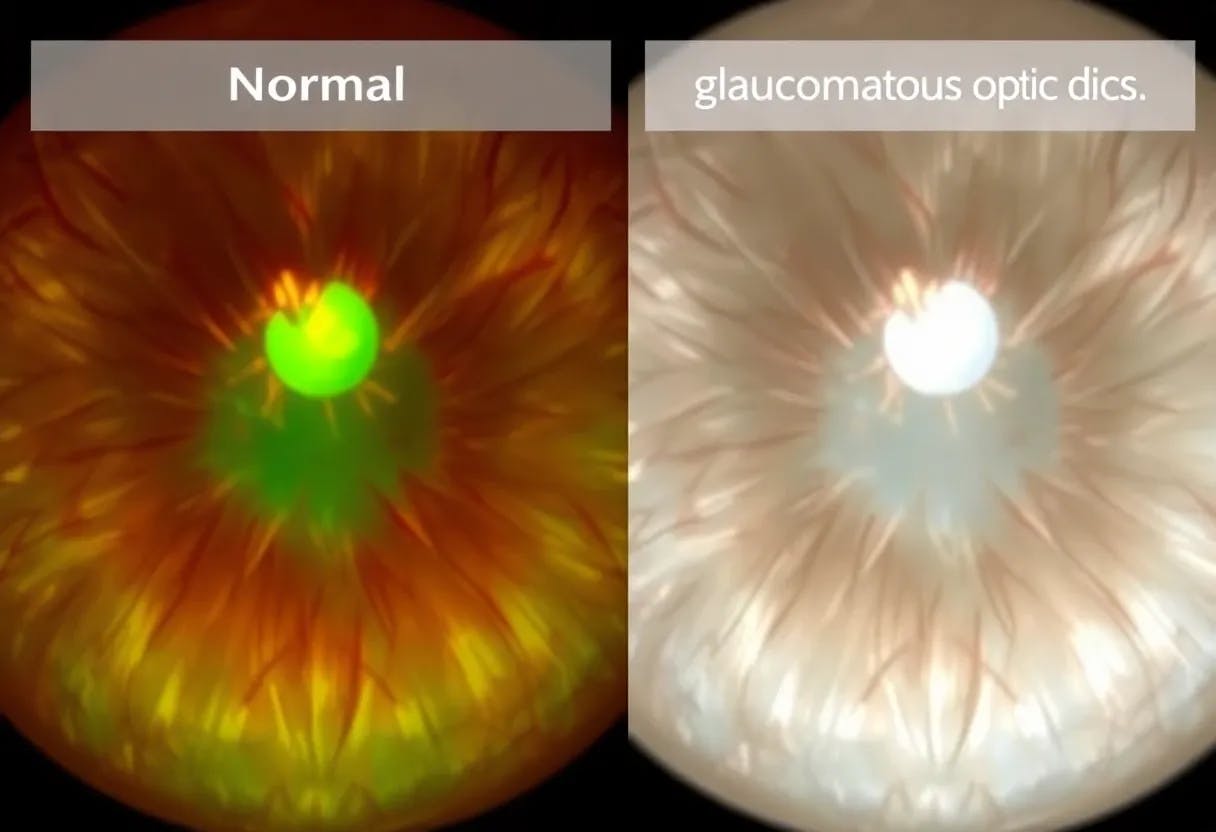Table of Links
Abstract and 1. Introduction
-
Methods
2.1 Participants
2.2 Data Acquisition
2.3 NFL Reflectance Analysis
-
Results
3.1 Neutral Density Filter Experiment
3.2 FSOCT Clinic Data Analysis
-
Discussion
-
Conclusions and References
2 Methods
2.1 Participants
This study utilized two cohorts of datasets, Neutral Density Filter (NDF) experimental data and Functional and Structural OCT (FSOCT) data. This prospective observational study was performed from January 06, 2017 to May 30, 2019 for FSOCT and 3/8/2022 to 5/12/2022 for NDF experiment at the Casey Eye Institute, Oregon Health & Science University (OHSU), Portland, OR, USA. The Institutional Review Board at OHSU approved the research protocol to carry the research accordingly with the tenets of the Declaration of Helsinki. Each of the participant given their written informed consent. This research was performed according to the Health Insurance Portability and Accountability Act of 1996 (HIPAA) privacy and security regulations.
The participants in the NDF study were part of the “Pilot Studies for New Scan Protocols Using UltrahighSpeed Optical Coherence Tomography” study. The NDF data contains only a normal group, while the FSOCT data consists of both a normal and a glaucoma group.
The inclusion and exclusion criteria for both the NDF experimental data and the FSOCT normal group are as follows: (1) No evidence of retinal pathology or glaucoma, (2) a normal Humphrey 24-2 VF, (3) intraocular pressure 500 µm, (5) no chronic ocular or systemic corticosteroid use, (6) an open angle on gonioscopy, (7) a normal appearing optic nerve head (ONH) and NFL, and (8) a symmetric ONH between left and right eyes.
It could be noted that the participants were excluded from this study if any of the following situations were observed: (1) best-corrected visual acuity less than 20/40, (2) age 80 years for FSOCT and age>21 for NDF, (3) spherical equivalent refractive error of > +3.00D or < -7.00 diopters, (4) previous intraocular surgery except for an uncomplicated cataract extraction with posterior chamber intraocular lens implantation, (5) any other diseases that might cause VF loss or optic disc abnormalities, or (6) inability to perform reliably on automated VF testing.
The FSOCT glaucoma group further divided into two groups, Preperimetric glaucoma (PPG) and Perimetric glaucoma (PG). The inclusion criteria for each of the group were different. The PG group’s inclusion criteria were (1) an optic disc rim defect (thinning or notching) or retinal NFL defect visible on slit-lamp bio-microscopy, and (2) a consistent glaucomatous pattern on both qualifying Humphrey SITA 24-2 VFs. A glaucoma specialist assed the pattern of glaucoma defect based on the VF total deviation map. It could be noted that either pattern standard deviation (PSD) outside normal limits (p < 0.05) or glaucoma hemifield test outside normal limits were defined as the abnormality criteria for glaucomatous VF. The PPG group only meet the biomicroscopic criteria (1), but not the VF criteria (2).
It should be noted that FSOCT normal data were followed up every year, while the glaucoma data were followed up every six months.
2.2 Data Acquisition
A spectral-domain OCT system (Solix, Optovue, Inc., Fremont, CA, USA) was used for scanning participants with a 130 kHz scanning rate, 840 nm wavelength. The study utilized the optic disc volumetric high-definition OCT angiography (HD OCTA) scan.
The area covered by the optic disc volumetric HD OCTA scan was 6.0×6.0 mm that centered on the disc. The cross-sectional B-frames consisted of 512 A-lines. Each cross-sectional B-frames were repeated twice at each location to allow the computation of the angiographic flow signal, and each volume composed of 512 B-frames. An orthogonal registration algorithm was used to merge two volumetric scans, i.e., a vertical-priority raster and a horizontal-priority raster, to reduce motion artifacts and improved image quality. The resultant merge algorithm provided both angiographic (flow signal) and structural (reflectance signal) images. In the study, we used good quality images with a signal strength index (SSI) of 50 (out of 100) or more and a quality index (QI) of 5 (out of 10) for FSOCT dataset. For NDF, we didn’t use SSI or QI, since want to study NDF experimental data with no quality control.
Standard automated perimetry on the Humphrey Field Analyzer (HFA II; Carl Zeiss Meditec, Inc., Dublin, CA, USA) used to assess the VF, which is using the Swedish Interactive Thresholding Algorithm 24-2.
2.3 NFL Reflectance Analysis
2.3.1 Nerve Fibre layer (NFL) Reflectance Metrics
We have evaluated several reference bands in this study (See Figure. 1), such as pigment epithelium complex (PPEC), the band between NFL and Bruch’s membrane (Post-NFL), and created a new reference called Post-NFL-Bright by selecting the top 50% of pixels with higher values from the Post-NFL band. Additionally, summation of attenuation coefficient in NFL layers, NFL/AC also evaluated for reliability test. A custom MATLAB program has been used to analyzed the NFL reflectance, the OCT data were transferred into linear scale first and then converted in to dB scale later. It could be noted the blood vessels were excluded from the OCT data for estimation. The NFL reflectance were summed to create NFL reflection map, then the ratio for each of the metrics (NFL/PPEC Max, NFL/PPEC mean, NFL/PostNFL-Mean and NFL/Post-NFL-Bright) were estimated. Detailed description of the references can be found here [2].
2.3.2 Summation of Attenuation Coefficients (AC)
A study suggested that the glaucomatous damage is not only reflected by the thickness and reflectance of the RNFL [6] but also by changes in its optical scattering properties. Therefore, quantitative scattering property from the OCT images is needed to measure. To measure the summation of the attenuation coefficient, we estimate the ratio of OCT intensity by the summation of intensity multiply by pixel size. We have implemented the Depth-resolved model-based reconstruction [7] method to estimate the summation of the attenuation coefficient. It could be noted that the author [7] used average attenuation coefficients whereas we used the summation for AC estimation because we want to compared the AC with references.
2.3.3 NDF Experiment
A series of scans for neutral density filter (NDF) were conducted for each scan pattern. Baseline scans were taken without any NDF. The NDF scans were taken by placing an absorptive NDF of increasing optical density (NEK01; Thorlab, Newton, NJ, USA) in front of the eye. The optical densities ranged from 0.1 to 0.6, as well as NDF with no filter. This resulted in the collection of 7 scans for each participant.
, the NDF data were used to normalize the NDF reflectance with the references. We applied a linear mixed model to estimate the slope for each metric at each NDF level. Lower slope values for the metrics indicate effective compensation in removing artifacts, whereas higher slope values indicate less effective compensation. Moreover, to assess the difference in slope between two segments, we utilized a broken stick model that had a breakpoint at NDF level = 0.4 optical density.
2.3.4 Adjustment of confounding factor
Our prime objective is to analysis repeatability among reference metrics with FSOCT dataset. Therefore, before doing that we want to reduce dependent on dataset with confounding factors, e.g., SSI, age, axial length and gender. We performed unpaired T-test for age, SSI and axial length, and Fisher’s exact test for gender to find association. The age and SSI have significantly associated (P<0.05) with the NFL reflectance metrics. However, in the subsequent stages of the analysis, we refrained from adjusting NFL reflectance using SSI as it had diagnostic information related to NFL intensity. Instead, we adjusted the normalized NFL reflectance metrics using age only.
2.3.5 FSOCT for repeatability, reproducibility and diagnostics
In the FSOCT dataset, multiple scans were performed for each eye. To evaluate within-visit repeatability and between-visit reproducibility, we divided the FSOCT data into two groups based on scan and visit. Two scans were selected for each participant on the same day for within-visit analysis. The duration between two visits was 5 to 14 months for between-visit analysis. The eye and scan were excluded if doesn’t meet the within-visit and between-visit criteria.
The pooled standard deviation (pooled SD) has been estimated among all the participant for repeatability and reproducibility analysis. Moreover, the intra-class correlation coefficient (ICC) is also measured to assess the consistency or agreement among all of the subjects. The ICC has been implemented using linear mixed model to consider random effect. We estimated pooled SD and ICC for each of the references (NFL/PPEC Max, NFL/PPEC Mean, NFL/Post-NFL-Mean, NFL/Post-NFL-Bright, NFL/AC) for evaluation.
It could be noted lower pooled SD and higher ICC provide better repeatability and reproducibility that ultimately means higher diagnostic accuracy. Therefore, we have estimated AROC in R for diagnostic accuracy for each of the references.
:::info
Authors:
(1) Kabir Hossain, PhD, Casey Eye Institute, Oregon Health & Science University;
(2) Ou Tan, PhD, Casey Eye Institute, Oregon Health & Science University;
(3) Po-Han Yeh, Casey Eye Institute, Oregon Health & Science University;
(4) Jie Wang, Casey Eye Institute, Oregon Health & Science University;
(5) Elizabeth White, Casey Eye Institute, Oregon Health & Science University;
(6) Dongseok Choi, Casey Eye Institute, Oregon Health & Science University;
(7) David Huang, Casey Eye Institute, Oregon Health & Science University.
:::
:::info
This paper is available on arxiv under ATTRIBUTION-NONCOMMERCIAL-NODERIVS 4.0 INTERNATIONAL license.
:::











